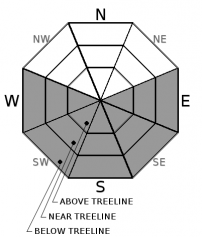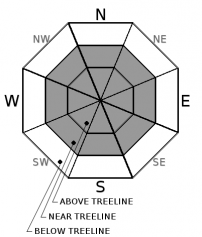| Monday | Monday Night | Tuesday | |
|---|---|---|---|
| Weather: | Sunny skies. | Clear skies. | Partly cloudy skies, becoming mostly cloudy. High level cloud cover. |
| Temperatures: | 32 to 38 deg. F. | 9 to 14 deg. F. | 39 to 44 deg. F. |
| Mid Slope Winds: | Variable | Variable | Variable |
| Wind Speed: | Light winds | Light winds | Light winds |
| Expected snowfall: | 0 | 0 | 0 |
| Monday | Monday Night | Tuesday | |
|---|---|---|---|
| Weather: | Sunny skies. | Clear skies. | Partly cloudy skies, becoming mostly cloudy. High level cloud cover. |
| Temperatures: | 28 to 34 deg. F. | 10 to 15 deg. F. | 36 to 42 deg. F. |
| Ridge Top Winds: | S | Variable | Variable |
| Wind Speed: | 10 to 15 mph with gusts to 25 mph in the morning, becoming light. | Light winds | Light winds |
| Expected snowfall: | 0 | 0 | 0 |




























